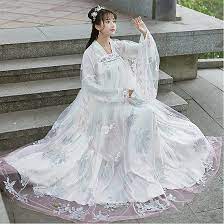Chinese dress for women dresses
Categories: Women dress

Chinese dress for women’s dresses
Chinese dress for women’s dresses, otherwise called a Qipao or Cheongsam, is a customary dress for ladies that began in China. It is a perfectly sized dress that normally includes a high mandarin collar, short sleeves, a fitted midsection, and a straight skirt that arrives at the knees or lower legs. The dress is frequently produced using silk or other sumptuous textures and is enhanced with mind boggling weaving and rich plans.
Throughout the long term, the chinese dress for women’s dresses has developed, and present day varieties of the Qipao currently integrate various styles and textures, taking special care of different preferences and events. A few contemporary renditions might have different sleeve lengths, neck areas, or even consolidate present day examples and prints.
Chinese dress for women’s dresses are famous in China as well as around the world as an exquisite and classy decision for unique occasions, formal events, and social festivals. They are much of the time worn during weddings, Chinese New Year festivities, and other merry social affairs.
It's fundamental for note that while the chinese dress for women’s dresses is a social and verifiable image, it's pivotal to move toward social attire with deference and comprehension of its importance to keep away from assignment or distortion. If you're interested in wearing a Chinese dress, make sure to appreciate its cultural heritage and significance while doing so.
Here are some key features and information about Chinese dress for women's dresses:
History and Origin: The cheongsam/qipao originated in the 1920s and 1930s in Shanghai, China. It was initially worn by upper-class women and later gained popularity among women from different social backgrounds. The chinese dress for women’s dresses combines traditional Chinese elements with Western fashion influences.
Design and Silhouette: The cheongsam/qipao is a perfectly sized dress that commonly includes a high collar, short sleeves, and a straight, limited cut. It is frequently made of silk or other sumptuous textures, which give it a smooth and exquisite appearance. The dress is known for emphasizing the female figure and featuring bends.
Traditional Elements: Chinese dress for women’s dresses often incorporate various traditional elements, such as intricate embroidery, delicate patterns, and symbolic motifs. These elements can represent cultural symbolism, regional influences, or personal preferences. Some common motifs include flowers, birds, dragons, and phoenixes.
Modern Adaptations: While traditional cheongsams/qipaos maintain their classic design, modern adaptations have emerged to cater to different preferences and occasions. These adaptations may feature different sleeve lengths, varying hemlines, and creative fabric choices. Some modern versions also incorporate Western fashion trends or fusion elements.
Occasions and Significance: Chinese dress for women’s dresses are often worn for special occasions, such as weddings, formal events, or cultural celebrations. They symbolize grace, femininity, and traditional Chinese aesthetics. In recent years, cheongsams/qipaos have gained popularity as fashion choices for various occasions beyond traditional settings.
Cultural Appreciation: When wearing Chinese women's dresses, it is important to approach them with respect and cultural appreciation. Grasp the verifiable and social meaning of the dress, and keep away from social allocation or distortion.
Availability: Chinese ladies' dresses can be tracked down in specialty shops, online stores, or at customary apparel markets in China and different areas of the planet. When purchasing or selecting a cheongsam/qipao, consider factors such as fabric quality, craftsmanship, and proper fit.
Remember, Chinese dress for women’s dresses are not only a beautiful fashion statement but also carry cultural and historical significance. Enjoy the elegance and uniqueness they offer while respecting the cultural context from which they originate.